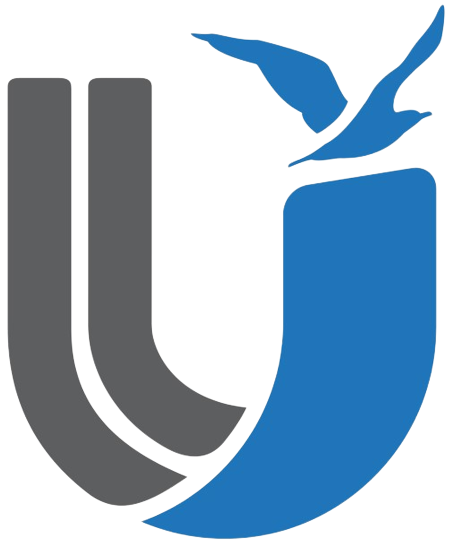Surviving the Storm: Website Strategies for Small Businesses to Drive Growth During Economic Downturns
When the economy takes a hit, small businesses often feel the impact first. Customers tighten their wallets, and competition for their limited spending becomes even fiercer. But here’s the good news: your website can be one of your most powerful tools for not just surviving but thriving during economic downturns. A smart, well-optimized online presence can drive sales, retain customers, and build long-term loyalty. The key is to focus on strategies that are both practical and impactful—ones that directly address customer concerns while maximizing your digital footprint.
Prioritizing Clarity and Simplicity in Website Navigation
When consumers are cautious with their spending, a confusing website can cost you sales. Your visitors shouldn’t have to work hard to find what they need—whether it’s a product, service, or crucial information. Streamlining navigation means reducing clutter, improving menu structures, and ensuring the most important pages are easy to access. A clear call-to-action (CTA) should stand out on every page, guiding potential customers smoothly through their buying journey. Keep it simple: if your website experience feels effortless, users are more likely to trust your business and make a purchase.
Enhancing Website Security with PDFs
Integrating PDFs into your website can do more than just provide information — they can also act as a protective layer for both your business and your customers. By using PDFs for key documents, contracts, or downloadable content, you create a controlled environment where sensitive data isn’t easily altered or tampered with. PDFs also come equipped with added security features like encryption and password-protection, giving you another level of defense against unauthorized access. If you want to know how to add or remove the password requirement from PDFs or adjust their security settings, you can find out more through helpful online tools and resources that make PDF management both accessible and straightforward.
Emphasizing Value-Driven Content to Build Trust
In tough financial times, customers are more selective about where they spend their money. This is where content marketing shines—offering value without requiring an immediate purchase. Educational blog posts, detailed guides, and engaging videos can position your business as an industry leader while addressing customer pain points. Content that helps users save money, use your products effectively, or navigate their challenges builds long-term relationships. The more your audience sees you as a valuable resource, the more likely they are to choose your business when they’re ready to buy.
Optimizing for Mobile to Capture On-the-Go Customers
A sluggish, desktop-centric website is a dealbreaker for today’s mobile-first audience. If your site isn’t mobile-friendly, you’re turning away potential customers before they even engage. Mobile optimization means more than just resizing content—it’s about speed, functionality, and user experience. Click-to-call buttons, fast-loading images, and intuitive design can make all the difference. With Google prioritizing mobile-friendly sites in search rankings, optimizing for mobile isn’t just good for user experience—it’s a direct play for more traffic and conversions.
Leveraging Customer Testimonials and Social Proof
Economic uncertainty makes people hesitant to spend, which is why trust signals are more important than ever. Customer testimonials, case studies, and user-generated content provide reassurance that your business is worth their investment. Featuring real reviews prominently on product pages, landing pages, and even your homepage helps reduce purchasing anxiety. Businesses that actively collect and showcase customer feedback create a sense of reliability and community—factors that heavily influence buying decisions when budgets are tight.
Implementing Personalized Offers to Encourage Repeat Business
Loyal customers are the backbone of any small business, especially during downturns. Instead of chasing new customers with expensive marketing, focus on keeping your existing ones engaged through personalized offers. Email marketing campaigns featuring tailored discounts, exclusive deals, and loyalty rewards can drive repeat purchases. A simple “We appreciate you” message with a special offer can go a long way in maintaining relationships and securing steady revenue. When customers feel valued, they’re more likely to stick with your brand over the long haul.
Using Data Analytics to Make Smarter Decisions
Guesswork has no place in a downturn—data-driven strategies are essential. Tools like Google Analytics, heatmaps, and customer behavior tracking provide insights into what’s working and what’s not. Are people leaving your checkout page before completing a purchase? Are certain product pages seeing high traffic but low conversions? By analyzing these patterns, you can make targeted improvements that have a direct impact on sales. The businesses that stay agile and adapt based on real-time data will be the ones that weather economic uncertainty the best.
Economic downturns test the resilience of small businesses, but the right website strategies can turn challenges into opportunities. A well-optimized site not only attracts new customers but also nurtures existing relationships, ensuring long-term growth even in tough times. From improving navigation and SEO to leveraging testimonials and personalized offers, every detail counts. By focusing on clarity, trust, and customer value, your website can become a powerful asset that drives success no matter the economic climate. The businesses that adapt and innovate now will emerge stronger when the market rebounds.
Explore all the ways United Corpus Christi is making a lasting impact in the community by supporting local initiatives and fostering positive change. Visit unitedcorpuschristi.org to learn how you can get involved

